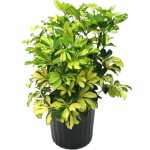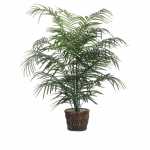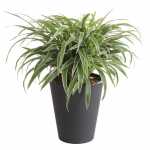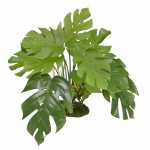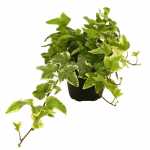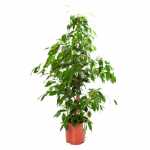Only a small number of people know that the air that’s inside our homes is actually more polluted than the one outside.
Many things affect the quality of air in our homes – furniture, PVC items, household appliances, wallpapers, detergents, cleaning products, plywood etc. All these items emit Times of India like phenol, benzene, toluene, formaldehyde etc.
They increase the presence of microorganisms and dust in the air, which eventually leads to the weakening of our health, the occurrence of allergies and various diseases and conditions related to the respiratory system.
However, by placing some helpful pot indoor plants in the rooms where you spend your time while you are at your home, they can act as a strong biological filtration system that can gather the dust (with the help of their leaves), attract bad matters and release sufficient amount of oxygen.
In order to purify the air, NASA used and recommended some pot of indoor plants in their space stations. The same indoor plants can do wonders in regular housing too.
The Best 10 Indoor Plants
The following is a short list of 10 most helpful indoor plants used for purification of air in the home:
1. Golden Creeper (Epipremnum Aureum)
As we have mentioned before, benzene is one of the harmful substances that is found in the air. The Golden creeper can eliminate the presence of benzene with the help of its large leaves that simply soak up these particles. On top of that, it is really easy to plant and grow this plant and it doesn’t need any special environment. In addition, it also soaks up many other harmful substances.
2. Umbrella Tree (Schefflera)
This plant is a perfect solution for homes or any other indoor area where people smoke. It absorbs and eliminates traces of tar and nicotine, substances that are found in large quantities in cigarettes. Umbrella tree is also very resistant and easy to maintain – all it needs is exposure to light and small amounts of water.
3. Chlorophytum
Although Hlorofitum is known as a beautiful decorative plant that’s usually placed on the windows, this plant also attracts and processes gas emissions quickly and effectively. So, people who live in apartments and houses that are located on the first or second floor will find it very helpful because this is where these gas emissions are higher.
4. Dracena
Dracena removes the negative effects of formaldehyde (gas related to plastic materials and disinfection products). This exotic plant can also process various toxic substances. Dracena should be kept away from direct exposure to the sun. It also needs a place where there is no rapid air flow because it can lose its leaves.
5. Happiness Palm (Chamaedorea Elegans)
This plant will not only purify the air in your apartment or house, but it will also provide some other health benefits. For example, it fights the dryness in the air and eliminates dangerous particles caused by plastic items in your home.
6. Bamboo Palm
This is one of the most attractive indoor plants on this list. It is particularly successful in filtering the air that contains high amounts of trichloroethylene and benzene. It should not be placed in direct sunlight and it needs to be watered on a regular basis.
7. Spider Plant
Spider plant is very popular among indoor plants because it is easy to grow and looks very interesting. This plant is very effective when it comes to elimination of pollutants such as xylene, carbon monoxide, benzene, formaldehyde etc.
8. Philodendron
The decorative vines that grow from this plant are a great choice for any type of interior, but it seems that philodendron is quite useful when it comes to a cleansing of air pollutants too. This plant needs moderate watering and small amounts of sunlight. It absorbs formaldehyde very fast.
9 and 10. English Room Ivy (Hedera Helix) and 10.Weeping Fig (Ficus Benjamina)
These two indoor plants are considered to be the best natural purifiers of air. The come with some fantastic filtering properties that allow them to process any type of airborne pollutants and they are especially useful in filtering xylene, toluene, and benzene.
Source: Country Living



